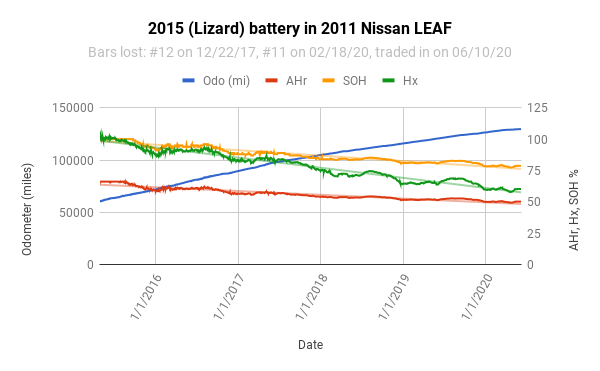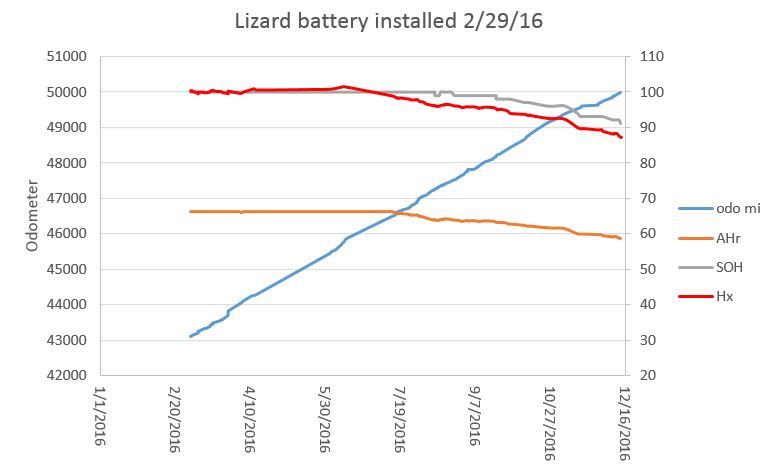ht2
Well-known member
ahagge said:Sorry for the delayed response, I'm not on as frequently these days.LeafMuranoDriver said:ahagge - How many miles per month are you driving? From the charts, it looks around 4,000 to 6,000 per month.
I think the high mileage is what is keeping the stats up. Once you start driving very little, they seem to drop quite rapidly, then level out.
To answer your question, I'm putting about 16,000 miles/year on the vehicle. At least 1,000 miles per month, every month (but no more than about 1,500 and certainly not in the 4k-6k range!).
FYI, here's the graph, updated through 10/28/16:

What I find interesting (and disheartening) now is that even though the weather has cooled significantly, the battery is losing capacity at an increased rate.
Sigh.
Thanks for the data.
I think there are two types of capacity loss in this data.
Unrecoverable loss caused by battery usage times/mileages and recoverable loss caused by yearly low temperature in the winter.
In September to January, capacity loss looks like twice as normal because above losses accumulate and in February to August, capacity loss cancel out and up down pretty much go to side way.
I am glad I did not see the third type of huge unrecoverable capacity loss caused by high temperature in the August to September usually find in the First generation of the Leaf battery.


